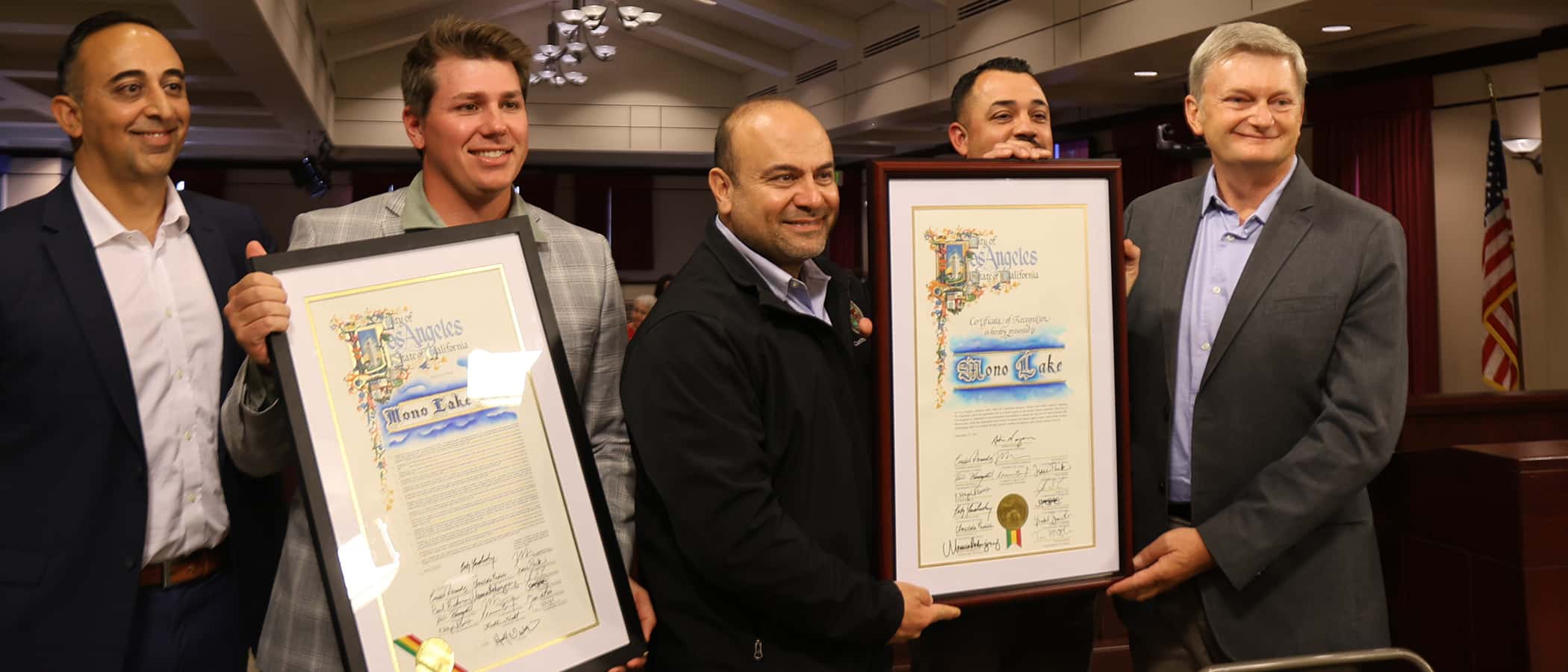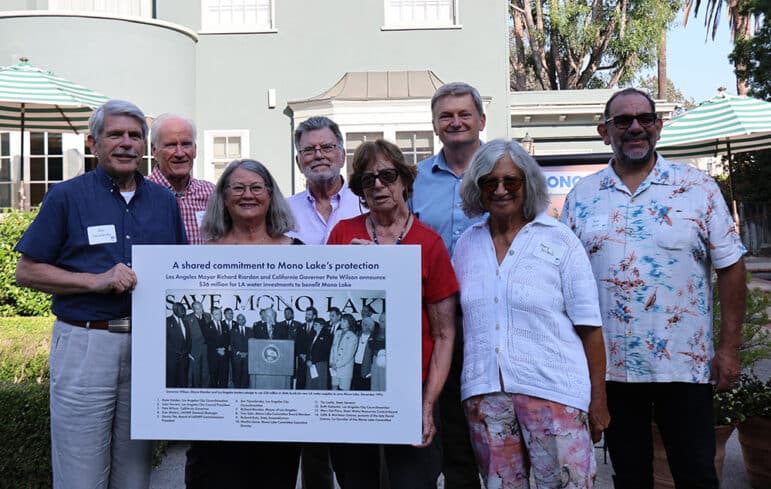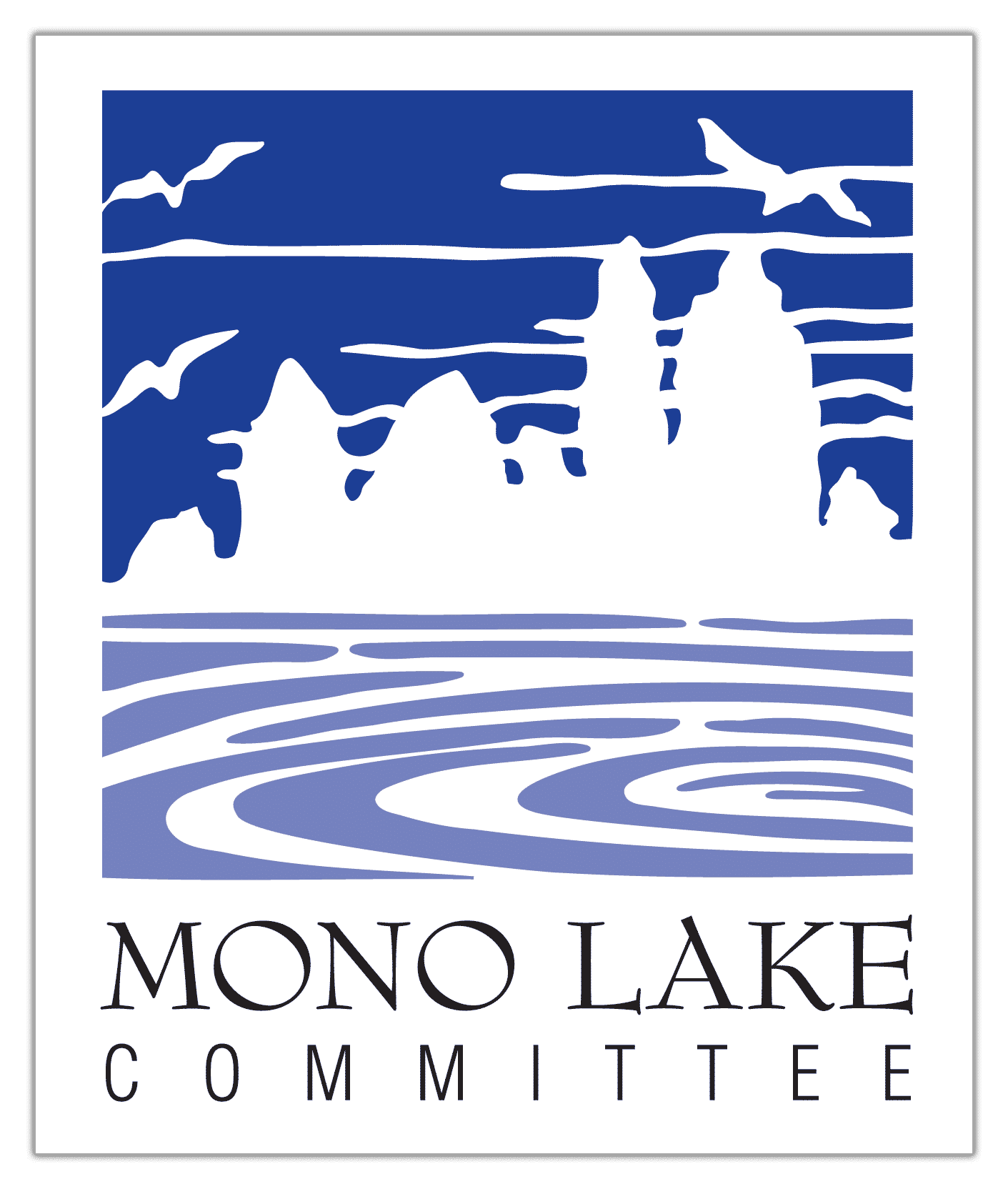
DWP misses the point, attempts to twist purpose of Mono Lake Day celebration
The Mono Lake Committee has celebrated September 28 for years as the anniversary of the establishment of the healthy 6,392-foot lake level requirement, when the State Water Board modified Los Angeles’ water rights in 1994. Last year the Los Angeles City Council joined in acknowledging the important milestone for the city too, proclaiming the date to be Mono Lake Day.
This year I journeyed south on Highway 395 for a celebration and renewal of that recognition in front of the LA City Council. It was a moment in the spotlight for Mono Lake—a moment which DWP chose to aggressively preview its intent to fight against raising the lake.
The agenda item was kicked off by Councilmember Adrin Nazarian, who appropriately noted, “Mono Lake Day reminds us that Los Angeles can meet the challenges of climate change while protecting the places that make California special.”
DWP representatives and its attorney also attended the meeting, though they largely missed the point of the city’s recognition of the importance of Mono Lake to the people of LA. The DWP spokesman made a promising start by recognizing “a continued commitment to protecting the environment and resources at Mono Lake…” But the message quickly went sideways, veering into a series of points that seemed to indicate DWP’s hope to keep water diversions forever unchanged, regardless of Mono Lake’s health.
The points came as no surprise, but DWP’s choice to use the City Council’s Mono Lake Day celebration as an opportunity to make its case was illuminating.
DWP incorrectly claimed that diversions have no impact on lake level—despite joint Mono Lake Committee and DWP hydrological modeling work showing otherwise. DWP said, “At this moment Mono Lake levels are completely dependent on hydrology, which means how many dry years in a row and how many wet years in a row we get.” This is untrue.
Then, after claiming its diversions are actually very small, DWP forecasted doom and gloom if those same diversions were reduced in order to accomplish the required lake restoration, saying it would have to purchase replacement water from other expensive imported water sources.
This was confusing to folks in attendance, since real solutions to LA’s needs lie in new local water supply programs. DWP then went on to celebrate these local supplies and how Los Angeles is a leader in water efficiency. “Angelenos are making huge investments to expand local water supply such as recycled water, groundwater, and stormwater capture,” DWP said, highlighting the very local supply solutions that make it possible to meet LA’s water needs while raising Mono Lake to the mandated—and agreed to—6,392-foot surface elevation required by the State Water Board back in 1994.
DWP’s spokesman next made a jab at the Committee, claiming credit for the scenic qualities of the Mono Basin and taking a swipe at the Mono Lake Committee calendar that hangs on so many cubicle walls at DWP headquarters. He claimed DWP “has enhanced the creation of scenic beauty in the area, such that it’s now a nice tourist attraction, and even some folks sell calendars with beautiful pictures on them of Mono Lake.”
Here’s what the Committee has known since David and Sally Gaines founded the organization: There’s DWP, the massive utility legendary for constructing the Los Angeles Aqueduct a century ago, which continues to disregard its damage to the Eastern Sierra. And then there are the people of Los Angeles and their elected representatives, who seek sustainable paths forward for the city and the environment. This was on full display for the City Council on Los Angeles’ Mono Lake Day.

For the Committee’s remarks I focused on how restoring Mono Lake is emblematic of a successful partnership with Los Angelenos to build a sustainable future—a fitting reason for the City Council to celebrate Mono Lake Day.
Choices made about water use in Los Angeles directly affect Mono Lake, and what I highlighted is that, regardless of what DWP has to say, the City views water management quite differently than it did in the old days of William Mulholland. As a result, for the three decades since Los Angeles accepted the State Water Board decision we’ve made a difference at Mono Lake, which would otherwise have collapsed ecologically by now. Even as we celebrate that progress, I emphasized that there is work to be done to achieve the healthy lake level—and that, through partnership, a sustainable water future is achievable for both Mono Lake and Los Angeles.
To wrap things up I quoted the City Council’s Mono Lake Day resolution, which conclude with a vision of the future “in which lakes, streams, cities, wildlife and people all have an opportunity to thrive together.”
City Council members, who oversee the largest public utility in the nation, are well acquainted with the need to parse DWP’s claims. Comments from Councilmember Katy Yaroslavsky, a water policy expert, were icing on the cake. After thanking the Mono Lake Committee for decades of hard work advocating for an ecosystem that the city directly impacts and appreciates, she observed, “There’s still plenty more work to do … progress is not victory…” And that is what protecting Mono Lake is all about: doing the work, making progress, and pursuing a future where we all—birds, brine shrimp, and all of us who care for the lake—thrive.
This post was also published as an article in the Fall 2025 Mono Lake Newsletter. Top photo courtesy of Ava Sanchez.
